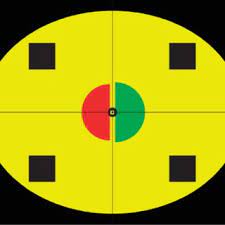Aniseikonia
Aniseikonia is a visual condition that occurs when there is a significant difference in the perceived size or shape of images between the two eyes. This condition can lead to a range of visual symptoms and discomfort.
Symptoms of Aniseikonia
The symptoms of aniseikonia can vary in severity and may include:
Blurred or Distorted Vision:
Individuals with aniseikonia may experience blurred vision or distortion of objects. Straight lines may appear wavy or curved.
Eye Strain and Fatigue:
Prolonged visual tasks can lead to eye strain and fatigue as the brain tries to reconcile the differences in image sizes between the eyes.
Headaches:
Aniseikonia can contribute to frequent headaches especially after visual activities that require prolonged focus.
Depth Perception Issues:
Aniseikonia may affect depth perception that makes it challenging to accurately judge distances or perceive the three-dimensional aspects of objects.
Double Vision:
In some cases aniseikonia can cause double vision (diplopia) where a single object appears as two separate images.
Causes of Aniseikonia
Aniseikonia can be caused due to following factors:
Refractive Error:
Differences in the prescription between the two eyes such as significant variations in nearsightedness, farsightedness or astigmatism can lead to aniseikonia.
Eye Surgery:
Certain eye surgeries, such as cataract removal or refractive surgeries like LASIK can result in changes in the size or shape of the eye’s optical system potentially causing aniseikonia.
Eye Trauma or Injury:
Injuries to the eye or changes in eye structure due to trauma can lead to aniseikonia. These changes can affect the way light enters the eye which results in disparities in image size.
Anisometropia:
Anisometropia is a condition characterized by a significant difference in refractive error between the two eyes and can contribute to aniseikonia.

Types of Aniseikonia
Aniseikonia can be categorized into two main types:
-
Physiological Aniseikonia
Physiological aniseikonia refers to the normal, natural variation in image size or shape between the two eyes. It is a common occurrence and usually results from inherent anatomical differences in the eyes. In physiological aniseikonia, the difference in image size between the eyes is typically small and does not cause significant visual discomfort or disturbance.
Causes of Physiological Aniseikonia
The causes of physiological aniseikonia include:
Ocular Anatomy:
Variations in the size, shape or position of the eyes can contribute to physiological aniseikonia. These differences may be present from birth and can be considered within the normal range of human anatomical variation.
Age-related Changes:
As we age, the eyes undergo natural changes that can lead to minor differences in image size or shape. These changes may result from factors such as changes in the lens, cornea or overall eye structure.
Implications of Physiological Aniseikonia
Physiological aniseikonia typically does not cause significant visual symptoms or require specific treatment. The brain adapts and combines the images from both eyes to create a unified and coherent visual perception. However, in some cases individuals with larger physiological aniseikonia may benefit from corrective lenses or vision therapy to improve visual comfort and clarity.
-
Anomalous Aniseikonia
Anomalous aniseikonia refers to an abnormal or atypical difference in image size or shape between the eyes. Unlike physiological aniseikonia, anomalous aniseikonia can cause noticeable visual disturbances and discomfort.
Causes of Anomalous Aniseikonia
Anomalous aniseikonia can be caused by various factors:
Refractive Errors:
Significant differences in refractive error such as extreme nearsightedness, farsightedness, or astigmatism that can lead to anomalous aniseikonia. These refractive errors cause variations in image magnification between the eyes.
Eye Surgery:
Certain eye surgeries such as refractive surgeries or cataract removal can cause anomalous aniseikonia if there are discrepancies in the size or shape of the implanted lens or corneal changes.
Eye Trauma or Injury:
Trauma or injury to the eyes can result in anomalous aniseikonia. Structural changes in the eye’s anatomy can lead to significant differences in image size or shape.
Implications of Anomalous Aniseikonia
Anomalous aniseikonia can have significant visual implications and may result in symptoms such as blurred vision, eye strain, headaches and difficulties with depth perception. It is important to diagnose and address anomalous aniseikonia to optimize visual function and comfort. Treatment options may include corrective lenses, prism lenses, vision therapy or in severe cases surgical interventions.

Treatment of Aniseikonia
The treatment of aniseikonia aims to minimize the difference in image size between the two eyes and improve visual comfort. Some common treatment options include:
Eyeglasses or Contact Lenses:
Customized prescription eyeglasses or contact lenses can be prescribed to correct the refractive error and minimize aniseikonia. These lenses are designed to provide balanced image sizes between the eyes, improving visual clarity and reducing discomfort.
Prism Lenses:
In some cases, prism lenses may be used to help align the images perceived by each eye reducing the disparity in image size. Prism lenses can be incorporated into eyeglasses or contact lenses.
Vision Therapy:
Vision therapy exercises can help individuals with aniseikonia improve their visual coordination and reduce symptoms. These exercises aim to enhance the brain’s ability to fuse images from both eyes and promote visual integration.
Surgical Interventions:
In rare cases where aniseikonia is severe and unresponsive to other treatments, surgical interventions may be considered. These procedures aim to correct the underlying cause of aniseikonia such as refractive surgeries or lens replacement.
Aniseikonia is a visual condition characterized by a significant difference in the perceived size or shape of images between the eyes. It can lead to various symptoms, including blurred vision, eye strain and headaches. Understanding the causes, types and available treatment options for aniseikonia is essential for proper diagnosis and management. Whether through customized eyeglasses, contact lenses, prism lenses, vision therapy or surgical interventions the individuals with aniseikonia can find relief and improve their visual comfort.





